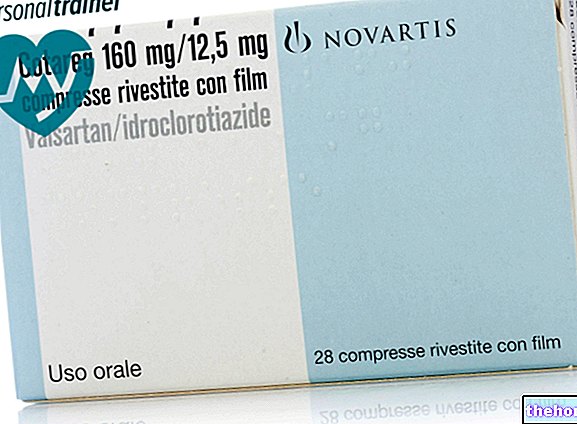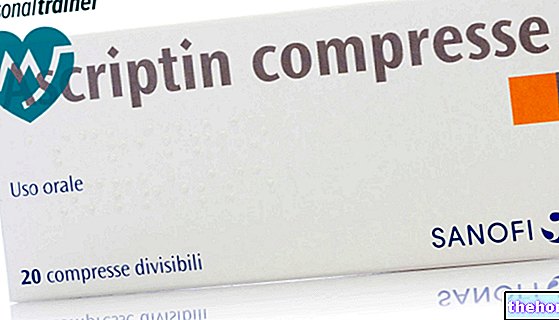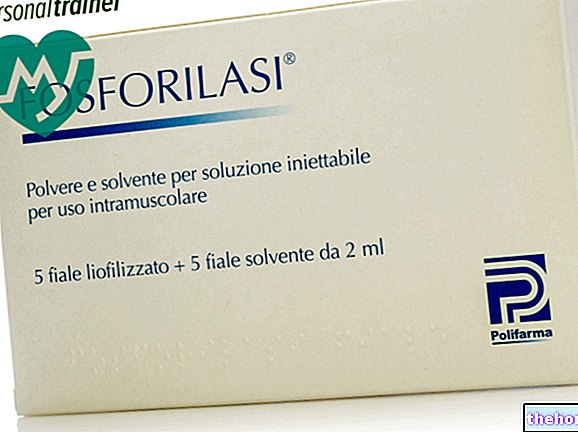Active ingredients: Buprenorphine
BUPRENORFINA MYLAN GENERICS 0.4 mg, 2 mg and 8 mg Sublingual tablets
Why is Buprenorphine - Generic Drug used? What is it for?
Medicinal product used in opioid drug addiction.
Buprenorphine Mylan Generics sublingual tablets are used as part of a medical, social and psychological treatment program for patients with opioid (narcotic) addiction. Treatment with Buprenorphine Mylan Generics sublingual tablets is used in adults and adolescents over the age of 15 years.
Contraindications When Buprenorphine - Generic Drug should not be used
Do not take Buprenorphine Mylan Generics sublingual tablets if:
- you are allergic (hypersensitive) to buprenorphine or any of the other ingredients of Buprenorphine Mylan Generics sublingual tablets
- have severe breathing problems
- have severe liver problems, or if your doctor identifies this problem developing during treatment
- have "alcohol intoxication or delirium tremens" ("jolts" and hallucinations)
- are breastfeeding.
Buprenorphine Mylan Generics sublingual tablets should not be used in children under 15 years of age.
Precautions for use What you need to know before taking Buprenorphine - Generic Drug
Take special care with Buprenorphine Mylan Generics sublingual tablets
Tell your doctor if any of the following diseases apply to you before starting treatment or if they develop during treatment, as your doctor may need to reduce your dose of Buprenorphine or add another treatment to control them:
- asthma or other breathing problems
- liver or kidney disease
- head injury or recent brain disease
- lowering of blood pressure
- in men: urinary disorders (in particular related to "enlarged prostate)
Misuse, especially intravenous administration in high doses, is dangerous and can be fatal.
Some people have died from respiratory failure (inability to breathe) because they have used buprenorphine incorrectly or taken in combination with other central nervous system depressant drugs such as alcohol, benzodiazepines (medicines used to treat anxiety or sleep disorders) or other opioids.
Cases of acute severe liver injury have occurred in a context of misuse of the medicine. These lesions could be due to particular conditions such as viral infections (chronic hepatitis C), alcohol abuse, anorexia or drug combinations (for example: antiretroviral nucleoside analogues, aspirin, amiodarone, isoniazid, valproate). If you experience symptoms of severe fatigue, lack of appetite, itching, or if your skin or eyes appear yellow, please inform your doctor immediately so that you can receive the appropriate treatment.
Interactions Which drugs or foods can modify the effect of Buprenorphine - Generic Drug
Tell your doctor or pharmacist if you are taking or have recently taken any other medicines, including those obtained without a prescription. Before taking Buprenorphine Mylan Generics sublingual tablets, you should tell your doctor if you are taking any of the following drugs:
- benzodiazepines and other medicines used to treat anxiety or sleep disturbances
- other medicines with sedative properties including sedative antihistamines, certain antidepressants and clonidine (a treatment for high blood pressure, migraines and hot flashes of menopause)
- strong pain relievers (opioid analgesics), cough medicines containing opioid-related substances and methadone
- monoamine oxidase inhibitors (a type of antidepressant)
- antipsychotic drugs
- gestodene (an oral contraceptive)
- medicines to treat HIV / AIDS (protease inhibitors) including indinavir, ritonavir and saquinavir
- antiepileptics (anticonvulsants) including phenobarbital, carbamazepine and phenytoin
- antibiotics including rifampicin, troleandomycin and ketoconazole (a treatment for fungal infections)
- phenprocoumon (an anticoagulant drug)
Using Buprenorphine Mylan Generics sublingual tablets with food and drink
Do not drink alcohol when taking Buprenorphine Mylan Generics treatment. Alcohol increases the sedative effects of buprenorphine, which can make driving and operating machinery dangerous.
Warnings It is important to know that:
This medicine can cause:
- withdrawal symptoms if taken before six hours have elapsed after using a narcotic (morphine, heroin or other related substances)
- drowsiness, which may be aggravated if you drink alcohol or take tranquilizers or anxiolytics at the same time. If you feel drowsy, do not drive or use machines
- sudden drop in blood pressure, which causes a feeling of dizziness if you stand up too quickly from a sitting or lying position
- drug addiction
- a positive reaction to "anti-doping" tests (athletes need to know)
For those who carry out sporting activities: the use of the drug without therapeutic necessity constitutes doping and can in any case determine positive anti-doping tests.
Pregnancy and breastfeeding
Ask your doctor or pharmacist for advice before taking any medicine.
Do not take Buprenorphine Mylan Generics if you are pregnant unless your doctor tells you otherwise
Do not take Buprenorphine Mylan Generics if you are breastfeeding.
Driving and using machines
Buprenorphine can cause drowsiness, especially when taken concomitantly with alcohol or certain antidepressants. If you feel tired, do not drive or use machines.
Important information about some of the ingredients of Buprenorphine Mylan Generics sublingual tablets
Buprenorphine Mylan Generics sublingual tablets contain lactose. If you have been told by your doctor that you have an "intolerance to some sugars, contact your doctor before taking this medicine.
Dose, Method and Time of Administration How to use Buprenorphine - Generic Drug: Posology
Method of administration
Always take Buprenorphine Mylan Generics sublingual tablets exactly as directed by your doctor. If you are unsure, ask your doctor or pharmacist.
The tablets are to be administered sublingually. This means that the tablet must be placed under the tongue and left to dissolve; it takes 5 to 10 minutes to dissolve. This is the only way the tablets should be taken. They should not be chewed or swallowed whole, as they are ineffective.
Dosage
The usual dose is:
Adults and adolescents over 15 years of age: the starting dose is 0.8 to 4 mg, given once a day.
Patients who have not undergone withdrawal: one dose of Buprenorphine Mylan Generics sublingual tablets at least 6 hours after the last opioid (narcotic) intake, or when the first signs of withdrawal appear.
Patients receiving methadone: Before starting Buprenorphine therapy, the physician should reduce the methadone dose to a maximum of 30 mg / day. Buprenorphine can precipitate withdrawal symptoms in methadone-dependent patients.
During treatment, your doctor may increase the dose of Buprenorphine to a maximum single daily dose of 24 mg, depending on the individual patient's response. After a successful period of treatment, the doctor may gradually reduce the dose. Depending on the person's medical condition, the reduction may continue under careful medical supervision until the drug is completely eliminated.
If you forget to take Buprenorphine Mylan Generics sublingual tablets
Do not take a double dose to make up for a forgotten dose. Talk to your doctor.
If you stop taking Buprenorphine Mylan Generics sublingual tablets
Stopping treatment suddenly may lead to withdrawal symptoms. If you have any further questions on the use of this medicine, ask your doctor or pharmacist.
Overdose What to do if you have taken an overdose of Buprenorphine - Generic Drug
If you take more Buprenorphine Mylan Generics sublingual tablets than you should
You must go or be immediately accompanied to the emergency room or hospital for treatment. Tell your doctor or pharmacist immediately.
Side Effects What are the side effects of Buprenorphine - Generic Drug
Like all medicines, Buprenorphine Mylan Generics can cause side effects, although not everybody gets them.
Very common side effects (affects more than 1 in 10 patients):
- insomnia
- a general sense of weakness
- withdrawal syndrome
Common side effects (affects less than 1 in 10 but more than 1 in 100 patients):
- headache
- fainting
- dizziness
- anxiety
- nervousness
- constipation
- nausea
- He retched
- lacrimation disorder
- a runny nose
- drowsiness
- sudden drop in blood pressure when standing up from a sitting or lying position
- sweating
Uncommon side effects (affects less than 1 in 100 but more than 1 in 1000 patients):
- hallucinations
- respiratory depression (severe difficulty in breathing)
- liver problems with or without jaundice
- liver necrosis (death of liver cells)
Very rare side effects (affects less than 1 in 1000 but more than 1 in 10,000 patients):
- hypersensitivity (allergic) reactions have been reported. Symptoms may include skin rash, hives and itching. If you develop symptoms of a severe allergic reaction (such as difficulty breathing, wheezing, swelling of the eyes, lips, throat, tongue or hands), seek medical attention.
If any of the side effects gets serious, or if you notice any side effects not listed in this leaflet, please tell your doctor or pharmacist.
Expiry and Retention
Keep out of the reach and sight of children.
Do not use Buprenorphine Mylan Generics sublingual tablets after the expiry date which is stated on the pack. The expiry date refers to the last day of the month indicated.
Buprenorphine Mylan Generics 0.4 mg sublingual tablets: Do not store above 25 ° C.
Buprenorphine Mylan Generics 2 mg and 8 mg sublingual tablets: this medicine does not require any special storage temperature conditions.
Store in the original package to protect from light and moisture.
Medicines should not be disposed of via wastewater or household waste. Ask your pharmacist how to throw away medicines you no longer use. This will help protect the environment.
Deadline "> Other information
What Buprenorphine Mylan Generics sublingual tablets contain
- The active ingredient is buprenorphine (as buprenorphine hydrochloride). Each tablet contains 0.4 mg, 2 mg or 8 mg of buprenorphine.
- The other ingredients are: lactose monohydrate, mannitol, maize starch, citric acid, sodium citrate, povidone k30, magnesium stearate, talc, anhydrous colloidal silica.
What Buprenorphine Mylan Generics sublingual tablets look like and contents of the pack
Buprenorphine Mylan Generics 0.4 mg sublingual tablets are white, round sublingual tablets marked "→" on one side.
Buprenorphine Mylan Generics 2 mg sublingual tablets are white, round sublingual tablets marked "2" on one side and "→" on the other side.
Buprenorphine Mylan Generics 8 mg sublingual tablets are white, round sublingual tablets marked "8" on one side and "→" on the other side.
The medicine is available in blister packs packed in boxes of 7 or 28, 30 or 70 tablets.
Not all pack sizes may be marketed.
Source Package Leaflet: AIFA (Italian Medicines Agency). Content published in January 2016. The information present may not be up-to-date.
To have access to the most up-to-date version, it is advisable to access the AIFA (Italian Medicines Agency) website. Disclaimer and useful information.
01.0 NAME OF THE MEDICINAL PRODUCT -
BUPRENORFINA MYLAN GENERICS 0,4 / 2/8 MG SUBLINGUAL TABLETS
02.0 QUALITATIVE AND QUANTITATIVE COMPOSITION -
Each sublingual tablet contains 0.4 mg of buprenorphine (as buprenorphine hydrochloride).
Excipient: each tablet contains 17.82 mg of lactose.
Each sublingual tablet contains 2 mg of buprenorphine (as buprenorphine hydrochloride).
Excipient: each tablet contains 30.51 mg of lactose.
Each sublingual tablet contains 8 mg of buprenorphine (as buprenorphine hydrochloride).
Excipient: each tablet contains 28.43 mg of lactose.
For the full list of excipients see section 6.1.
03.0 PHARMACEUTICAL FORM -
Sublingual tablet.
Uncoated, white, round, biconvex tablet with "→" printed on one side.
Uncoated, white, round, biconvex tablet with "2" printed on one side and "→" printed on the other side.
Uncoated, white, round, biconvex tablet with "8" printed on one side and "→" printed on the other side
04.0 CLINICAL INFORMATION -
04.1 Therapeutic indications -
Substitution treatment for opioid drug addiction as part of a medical, social and psychological treatment.
04.2 Posology and method of administration -
The treatment should be used in adults and adolescents over 15 years of age who have agreed to be treated for drug addiction.
When starting a treatment with buprenorphine, the physician should be aware of the partial agonist profile of buprenorphine and should know that this substance can precipitate the withdrawal syndrome in opioid-dependent patients.
Before starting treatment, the type of opioid dependence (ie whether the patient is using fast-acting or long-acting opioids), how long it has been since the last use of opioids, and the degree of opioid dependence should be considered. to avoid precipitating abstinence, induction with buprenorphine should be undertaken when clear and objective signs of abstinence appear.
Administration is sublingual. Physicians should advise their patients that sublingual administration is the only effective and safe route of administration for this drug. The tablet should be held under the tongue until it dissolves completely, which takes 5 to 10 minutes to dissolve.
Before starting therapy, it is recommended that normal liver function tests be performed and that the presence of viral hepatitis be documented. Patients who test positive for viral hepatitis, patients on concomitant therapy (see section 4.5) and / or patients with existing hepatic dysfunction are at risk for accelerated progression of liver injury. regular monitoring of liver function (see section 4.4).
Induction therapy
The starting dose is 0.8 mg to 4 mg, given as a single daily dose.
• For opioid addicts who have not been subjected to withdrawal: one dose of buprenorphine tablets administered sublingually at least 6 hours after the last opioid intake or when the first signs of withdrawal appear.
• For patients receiving methadone: Before starting buprenorphine therapy, the methadone dose should be reduced to a maximum of 30 mg / day. Buprenorphine can precipitate withdrawal symptoms in methadone-dependent patients.
Dose adjustment and maintenance therapy:
the dose of buprenorphine should be progressively increased according to the clinical effect of the individual patient and the maximum single daily dose should not exceed 24 mg. The dosage is titrated according to the reassessment of the patient's clinical and psychological status.
In the first period of treatment, a distribution of buprenorphine on a daily basis is recommended. Subsequently, once the patient has stabilized, a quantity of drug can be provided to be divided into several days of treatment (limited to a maximum of 7 days or according to local regulations).
Dose reduction and termination of treatment:
after a satisfactory stabilization period has been reached, the dosage can be gradually reduced to a lower maintenance dose; in some patients, when considered appropriate, treatment may be discontinued. The availability of sublingual tablets in doses of 0.4 mg, 2 mg and 8 mg, respectively, allows for a downward titration of the dose. At the end of treatment with buprenorphine, patients should be monitored for the possibility of relapse.
Patients with impaired liver function :
the effect of hepatic impairment on buprenorphine pharmacokinetics is not known. As buprenorphine is extensively metabolised, plasma levels of the drug are likely to be higher in patients with moderate to severe hepatic impairment.
Patients with impaired renal function :
no modification of the buprenorphine dose is required in patients with renal insufficiency. Caution is advised when deciding the dosage of patients with severe renal impairment (CLcr
04.3 Contraindications -
- Hypersensitivity to buprenorphine or to any of the excipients
- Children and adolescents under the age of 15
- Severe respiratory insufficiency
- Severe hepatic insufficiency
- Acute alcoholism or delirium tremens
- Breastfeeding
04.4 Special warnings and appropriate precautions for use -
Due to the lack of information on the use of the medicine in adolescents (15-18 years), buprenorphine should be used with caution in this age group.
Warnings
Buprenorphine is only recommended for the treatment of opioid drug addiction. It is also recommended that the treatment be prescribed by a doctor who guarantees a comprehensive treatment of the drug addict patient.
- The physician must consider the risk of abuse and misuse (eg intravenous administration), especially at the start of treatment.
- Deviation: Diversion refers to the introduction of sublingual buprenorphine into the illicit market either by patients or by individuals obtaining the medicine through theft from patients or pharmacies. This diversion may lead to new addicts using sublingual buprenorphine as a drug primary with the risk of overdose, spread of viral infections that are transmitted by the blood, respiratory depression and liver injury.
- Precipitation of the withdrawal syndrome: When starting a treatment with sublingual buprenorphine, the physician should be aware of the partial agonist profile of buprenorphine and should know that this substance can precipitate the withdrawal syndrome in patients with opioid dependence, especially if it is administered before 6 hours have elapsed. "last use of heroin or other fast-acting opioids, or if given before 24 hours have passed since the last dose of methadone." Conversely, withdrawal symptoms may also be associated with suboptimal dosage.
The risk of serious adverse events such as "overdose or discontinuation of treatment" is greater if the patient takes too low doses of sublingual buprenorphine and continues to treat withdrawal symptoms with opioids, alcohol or other sedative-hypnotics, particularly benzodiazepines, on their own. .
-Dependence: Buprenorphine is a partial agonist of mu opioid receptors and its chronic administration produces dependence on this type of opioid. Discontinuation of treatment may lead to delayed abstinence.
- Respiratory depression: Some deaths have been reported due to respiratory depression, particularly when the drug was used in combination with benzodiazepines (see section 4.5) or when buprenorphine was not used as indicated.
- Hepatitis, hepatic eventsCases of acute hepatic injury in opioid addicts have been reported in both clinical trials and post-marketing adverse event reports. Abnormalities range from transient asymptomatic elevations of liver transaminases to case reports of liver failure. In many cases the presence of pre-existing liver enzyme abnormalities, a "hepatitis B or hepatitis C virus infection," concomitant use of other drugs potentially toxic to the liver (aspirin, amiodarone, protease inhibitors, isoniazid ...) and continued intravenous drug use may play a causal or contributing role. These underlying factors should be considered before prescribing sublingual buprenorphine and during treatment. When a hepatic event of unknown cause is suspected further evaluation is required. If buprenorphine is suspected to be the cause of hepatic necrosis or jaundice, the drug should be discontinued as quickly as is permitted by the patient's clinical condition. liver function at regular intervals.
- Dose adjustments should be made with caution in patients using CYP3A4 inhibitors, as CYP3A4 inhibitors may increase plasma levels of buprenorphine (see section 4.5). Patients using CYP3A4 inhibitors can be treated with lower doses.
- This medicinal product may cause drowsiness, which may be made more acute by other centrally acting drugs such as alcohol, tranquilizers, sedatives and hypnotics (see section 4.5).
- This medicine can cause orthostatic hypotension.
- Athletes should be aware that this medicine can cause a positive reaction to doping tests.
Pediatric use
There is no information in children under 15 years of age; therefore buprenorphine should not be used in children under 15 years of age.
Precautions for use
This medicinal product should be used with caution in patients with:
• asthma or respiratory failure (cases of respiratory depression have been reported with buprenorphine);
• renal insufficiency (20% of the administered dose is excreted via the kidneys; therefore elimination via the kidneys may become longer);
• hepatic insufficiency (the hepatic metabolism of buprenorphine may be impaired);
• As with other opioids, caution is warranted in patients using buprenorphine and who have head trauma, increased intracranial pressure, hypotension, prostatic hypertrophy or urethral stricture.
Excipient:
this medicine contains lactose. Patients with rare hereditary problems of galactose intolerance, deficiency of Lapp lactase or glucose-galactose malabsorption, they should not take this medicine.
04.5 Interactions with other medicinal products and other forms of interaction -
Buprenorphine should not be taken with alcoholic beverages or medicines that contain alcohol. Alcohol increases the sedative effect of buprenorphine (see section 4.7).
Buprenorphine should be used with caution in conjunction with:
• Benzodiazepines: this combination can potentiate respiratory depression of central origin with risk of death; therefore dose titration should be performed on an individual basis and the patient monitored closely. The risk of drug abuse should also be considered (see section 4.4).
• Other central nervous system depressants; other opioid derivatives (eg methadone, analgesics and antitussives); certain antidepressants, sedative H1 receptor antagonists, barbiturates, anxiolytics other than benzodiazepines, neuroleptics, clonidine and related substances. This association increases central nervous system depression.
• Monoamine oxidase inhibitors (MAOIs). Possible potentiation of the effects of opioids, based on experience with morphine.
• To date, no relevant interactions have been observed with cocaine, the substance most frequently used by poly-drug addicts in association with opioids.
A suspected interaction between buprenorphine injection and phenprocoumon has been reported, leading to the development of purpura.
A study on the interaction between buprenorphine and ketoconazole (a potent inhibitor of CYP3A4) showed an increase in the Cmax and AUC of buprenorphine (approximately 70% and 50% respectively) and an increase, to a lesser extent, in the drug metabolite, the norbuprenorphine Patients receiving buprenorphine should be closely monitored and the buprenorphine dose should be halved when ketoconazole treatment is initiated.
Although no clinical trial data are available, the use of other CYP3A4 inhibitors (such as gestodene, troleandomycin, and the HIV protease inhibitors ritonavir, indinavir and saquinavir) may increase exposure levels to buprenorphine and norbuprenorphine, and such dose reduction should be considered when initiating treatment.
The interaction of buprenorphine with CYP3A4 inducers has not been studied, and therefore careful monitoring of patients receiving buprenorphine is recommended if they are concurrently taking enzyme inducers (eg phenobarbital, carbamazepine, phenytoin, rifampicin). of these medicinal products may increase the metabolism of buprenorphine and the dose of buprenorphine should be appropriately increased if patients report less benefit of buprenorphine or if withdrawal symptoms from illicit drugs return.
04.6 Pregnancy and breastfeeding -
Pregnancy
There are currently insufficient human data to evaluate potential foetotoxic or malformative effects of buprenorphine administered in pregnancy.
At the end of pregnancy, high doses, albeit for a short period of time, can induce respiratory depression in newborns. In the last trimester of pregnancy, chronic use of buprenorphine may be responsible for a withdrawal syndrome in newborns. Therefore, buprenorphine should not be used in pregnancy unless the clinical condition of the woman requires treatment with buprenorphine and the potential benefits justify the potential. risks to the fetus.
Breastfeeding
As shown in rat studies, buprenorphine can inhibit lactation and milk production. Also, since buprenorphine passes into breast milk, breastfeeding is contraindicated.
04.7 Effects on ability to drive and use machines -
Buprenorphine can cause drowsiness, especially when taken together with alcohol or central nervous system depressants. Patients should therefore be advised not to drive or operate machinery (see section 4.5).
04.8 Undesirable effects -
The occurrence of undesirable effects depends on the tolerance threshold of the individual patient, which in drug addicts is higher than that present in the general population.
Undesirable effects are conventionally defined according to their frequency as follows:
very common (≥1 / 10); common (≥ 1/100 to
* In some cases of misuse of the drug intravenously, local reactions, sometimes septic, and potentially severe acute hepatitis have been reported (see section 4.4).
04.9 Overdose -
In the event of an overdose, general supportive measures should be undertaken which include close monitoring of the patient's cardiac and respiratory status. The major symptom requiring intervention is respiratory depression which can lead to respiratory arrest and death. If the patient vomits, aspiration of vomit should be prevented.
Treatment: symptomatic treatment of respiratory depression should be instituted after normal intensive care measures. A patent airway must be ensured and assisted or controlled ventilation maintained. The patient should be transferred to an environment where all resuscitation equipment is available. The use of an opioid antagonist (such as naloxone) is recommended although its effect in reversing the respiratory symptoms of buprenorphine is modest compared to its effects on complete agonist opioids.
The long duration of action of buprenorphine should be taken into account when determining the length of treatment needed to reverse the effects of overdose.
05.0 PHARMACOLOGICAL PROPERTIES -
05.1 "Pharmacodynamic properties -
Pharmacotherapeutic group: drugs used in opioid addiction.
ATC code: N07 BC01.
Buprenorphine is a partial opioid agonist / antagonist that binds to the µ (mu) and κ (kappa) receptors of the brain. Its action in opioid maintenance treatment is attributed to its slowly reversible binding to the µ receptors which, over a long period of time, minimizes the need for drugs in an addict.
During clinical pharmacology studies in opioid-dependent subjects, buprenorphine has demonstrated a ceiling effect on several parameters including positive mood, "good effect" and respiratory depression.
05.2 "Pharmacokinetic properties -
Absorption
When taken orally, buprenorphine undergoes first pass hepatic metabolism with N-dealkylation and glucuroconjugation in the small intestine. The use of this medicinal product by the oral route is therefore inappropriate.
Peak plasma concentrations are reached 90 minutes after sublingual administration and the maximum dose-concentration ratio is linear, between 2 mg and 16 mg.
Distribution
The absorption of buprenorphine is followed by a rapid distribution phase and a half-life ranging from 2 to 5 hours.
Metabolism and elimination
Buprenorphine is oxidatively metabolised via 14-N-dealkylation to N-desalkyl-buprenorphine (also known as norbuprenorphine) via cytochrome P450 CYP3A4 and via glucuroconjugation of the parent molecule and the dealkylated metabolite. Norbuprenorphine is a µ (mu) receptor agonist with weak intrinsic activity.
The elimination of buprenorphine is bi- or tri-exponential, with a long terminal elimination phase ranging from 20 to 25 hours, partly explained by the reabsorption of buprenorphine after intestinal hydrolysis of the conjugated derivative and partly by the highly lipophilic nature of the molecule.
Buprenorphine is eliminated essentially in the faeces by biliary excretion of the glucuroconjugated metabolites (80%), while the remainder is eliminated in the urine.
05.3 Preclinical safety data -
The acute toxicity of buprenorphine in mice and rats was determined after oral and parenteral administration. The mean lethal doses (LD50) in mice were 26, 94 and 261 mg / kg for intravenous, intraperitoneal and oral administration, respectively. The LD50 values in the rat were 35, 243 and 600 mg / kg for intravenous, intraperitoneal and oral administration, respectively.
Continuous administration of subcutaneous buprenorphine for one month to beagle dogs, oral for one month to rhesus monkeys and intramuscular for six months to rats and baboons demonstrated remarkably low levels of tissue and biochemical toxicity.
Based on teratogenicity studies in rats and rabbits, it was concluded that buprenorphine is neither embryotoxic nor teratogenic and has no marked effects on weaning potential. There were no adverse effects on fertility or general reproductive function of the rats, although at the highest intramuscular dose (5mg / kg / day) the mothers had some difficulty giving birth and neonatal mortality was high.
Studies in rats and rabbits have shown fetal toxicity including post-implantation loss. Furthermore, oral administration to mothers at high doses during gestation and lactation led to a slight delay in the development of some neurological functions (surface righting reflex and startle response) in newborn rats.
Minimal to moderate bile duct hyperplasia with associated peribial fibrosis occurred in dogs after 52 weeks of oral administration of 75mg / kg / day.
06.0 PHARMACEUTICAL INFORMATION -
06.1 Excipients -
Lactose monohydrate,
mannitol,
cornstarch,
anhydrous citric acid,
sodium citrate,
povidone K30,
magnesium stearate,
talc,
anhydrous colloidal silica.
06.2 Incompatibility "-
Not applicable.
06.3 Period of validity "-
2 years.
06.4 Special precautions for storage -
[0.4 mg] Do not store above 25 ° C. Store in the original package in order to protect from light and moisture.
[2 mg and 8 mg] This medicinal product does not require any special storage temperature conditions. Store in the original package to protect from light and moisture.
06.5 Nature of the immediate packaging and contents of the package -
PVC / aluminum blister packs.
Packs of 7, 28, 30 and 70 sublingual tablets.
Not all pack sizes may be marketed.
06.6 Instructions for use and handling -
No special requirements.
07.0 HOLDER OF THE "MARKETING AUTHORIZATION" -
Mylan S.p.A
Via Vittor Pisani, 20
20124 Milan
08.0 MARKETING AUTHORIZATION NUMBER -
039747011 - "0,4 MG SUBLINGUAL TABLETS" 7 TABLETS IN PVC / AL BLISTER
039747023 - "0,4 MG SUBLINGUAL TABLETS" 28 TABLETS IN PVC / AL BLISTER
039747035 - "0,4 MG SUBLINGUAL TABLETS" 30 TABLETS IN PVC / AL BLISTER
039747047 - "0,4 MG SUBLINGUAL TABLETS" 70 TABLETS IN PVC / AL BLISTER
039747050 - "2 MG SUBLINGUAL TABLETS" 7 TABLETS IN PVC / AL BLISTER
039747062 - "2 MG SUBLINGUAL TABLETS" 28 TABLETS IN PVC / AL BLISTER
039747074 - "2 MG SUBLINGUAL TABLETS" 30 TABLETS IN PVC / AL BLISTER
039747086 - "2 MG SUBLINGUAL TABLETS" 70 TABLETS IN PVC / AL BLISTER
039747098 - "8 MG SUBLINGUAL TABLETS" 7 TABLETS IN PVC / AL BLISTER
039747100 - "8 MG SUBLINGUAL TABLETS" 28 TABLETS IN PVC / AL BLISTER
039747112 - "8 MG SUBLINGUAL TABLETS" 30 TABLETS IN PVC / AL BLISTER
039747124 - "8 MG SUBLINGUAL TABLETS" 70 TABLETS IN PVC / AL BLISTER
09.0 DATE OF FIRST AUTHORIZATION OR RENEWAL OF THE AUTHORIZATION -
10.0 DATE OF REVISION OF THE TEXT -
January 2011




























